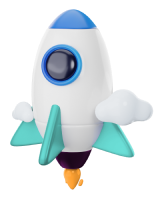The tech industry is only getting bigger. Technology developments impact all parts of our lives, from new social media channels to improved home security.
With 2023 fast approaching, it’s time to consider what to expect in the new year. Learn future tech trends and get ahead of the curve below!
Want to learn how to use new technology to your advantage?Contact us onlineto learn more!
Don’t miss our Marketing Manager Insider emails!
Join200,000smart marketers and get the month’s hottest marketing news and insights delivered straight to your inbox!
Enter your email below:
Inline Subscription Form – CTA 72
“*” indicates required fields
(Don’t worry, we’ll never share your information!)

How fast is the tech industry growing?
Before we get into future tech trends, it’s essential to know where the industry stands to understand how these changes are new and noteworthy.
In 2021, the tech industry made upabout 9% of the GDP— that number reached10.5% in 2022. With new technology and jobs emerging, that number will increase even more in 2023.
Since the 2020 COVID-19 pandemic, multiple industries have fought to maintain or initiate growth. The tech industry spread to remote work, hybrid offices, and health care advancements. We can expect to see more change as the country settles into a post-COVID world.
Current trends in the tech industry
On this page, we’ll unpack the following topics:
- Artificial intelligence (AI)
- Metaverse
- Ambient computing
- Blockchain
- Cloud platform security
- Sustainable tech
- 5G and beyond
- Third-party cookie phasing
Read on to learn more!
1. Artificial intelligence (AI)
Artificial intelligence has been around for years — the difference in 2023 is what we can do with it. Consumers can expect to see AI in all facets of the retail space and other industries.
Here are a few examples:
- Retailers:Businesses canuse AI marketing toolsto cater their advertisements to customers based on previous purchases and behavior.
- Finance groups:AI tools can detect fraudulent behavior and automate some customer service.
- Health care:Clinics can diagnose and treat patients by analyzing their preexisting conditions and treatments to find gaps with other learned data.
AI is already part of our daily life — 2023 will advance how we approach routine tasks.
2. Metaverse
Themetaverseis a synchronized platform where users can work, exist, and play from one place. Companies like Fortnite, Microsoft, and Nvidia are moving towards metaverse creation.
Facebook’s rebranding to Meta in 2021 indicated how companies expect the metaverse to impact the internet. This section on Meta’s website highlights how users can use the Quest equipment to roam the metaverse.

Though it may seem far from a virtual world, companies use augmented reality (AR) and virtual reality (VR) to onboard and coach new members. VR gaming systems have become household accessible, while users can find AR inSnapchat filters.
Businesses can also use Snapchat’s filters for advertising and brand awareness, as illustrated below.

As of 2022, the metaverse market value sits at $47 billion, and experts predict the metaverse will be worth$678 billion by 2030. 2023 will tell us what direction the metaverse is heading and how it can integrate further into daily life.
3. Ambient computing
Ambient computing — or ubiquitous computing — describes a collection of software, devices, AI technology, and human action that enables computing technology in daily life. This term encompasses software engineering, hardware engineering, and computer science technology.
The goal of ambient technology is for it to fade into the background, where users get the benefits of technology without actively thinking about it. While the Internet of Things is a collection of intertwined devices on one network, ambient computing considers how these devices work to minimize friction for the user.
Voice assistant devices are the most available example of ambient computing, and they have developed in the past several years. Before, Alexa could tell you the time or answer a question. Amazon Alexa devices can now monitor your house, control your lights, and manage your to-do’s.

These features will become more automatic as machine learning understands what users want. For businesses, that means new targeted marketing opportunities and personalization channels.
4. Blockchain
A blockchain is a digital ledger that stores transactional information with multiple participants, making hacking more difficult. Each transaction is sent to a network of computers known as nodes. Once they approve the transaction (block), they link (chain) it to the other transactions.
Though commonly associated with cryptocurrency, companies can safely use blockchain technology to accomplish various transactions. Blockchain is taking off in the following industries:
- Finance:Users can send and receive money without going through a vendor or third party. Financial institutions can secure their transactions against hackers and use smart contracts instead of physical ones.
- Gaming:Developers and players can use blockchain technology to create a more secure server where each user has a solid presence in the game. They can also use technology to create one profile across all games and track leaderboards.
- Supply chain management:Supply companies can update their data and transactions to one shared ledger, where everyone must confirm the information as accurate. They can also automate tracking and product availability in real-time.
Over time, blockchain can change how businesses store, access, and communicate information to employees and clients, ideally saving time and money with better security.
5. Cloud platform security
With the rise of cloud software anddata warehousescomes the need for enhanced security and procedures. Keeping customer and company data safe requires constant protection and multiple precautions.
Along with enhanced security, companies could unlock the benefits of a hybrid-cloud experience, like:
- Improved resilience to errors or attempted hacks.
- Reduced provider lock-in and commitment.
- Enhanced performance, thanks to lower pressure on one service.
随着企业更多地投资于安全,他们可能伊娃luate their internal resources and find outsourcing options more ideal for their workforce. This evaluation could point to more demand forthird-party cloud servicesand help companies reduce strain on their staff.
6. Sustainable tech
Green technology is becoming more accessible for home and business use. While some businesses are reducing their carbon footprint, others are using technology to make green options available to everyone.
In one report from IBM,51% of respondentsclaimed environmental sustainability is more important now than it was 12 months ago. That means more people will choose sustainable tech when they have a choice.
Some prime examples of eco-conscious technology in 2023 include:
- Carbon capture and storage (CCS):The CCS process separates carbon dioxide from other gases that occur during industrial processes to keep it from harming Earth.
- LED lighting:A simple yet crucial advancement, LED lighting significantly reduces energy consumption while requiring minimal user effort.
- Smart home features:AI and ML sensors can help reduce energy usage by controlling electronics and temperatures 24/7.
7. 5G and beyond
5G is the next wave of cellular technology coming fast — literally. 5G is the successor to 4G that brings improved speeds, seamless user interface, better availability, and faster connections.
With the increase in streaming, mobile connection, and hybrid work, the demand for data has increased. 5G will become more accessible to consumers through smartphones and cellular devices.
8. Third-party cookie phasing
Third-party cookies are placed on a website to collect user information that the third party uses to create a better user experience. Third- and first-party data is integral for creating targeted ads.
Many consumers are pushing for more privacy, and Google plans toremove support for third-party cookiesby 2024. While the official phase-out has been postponed, 2023 will emphasize advertising shifts for businesses.
Some alternatives to third-party cookies include:
- First-party data:Information the website provider collects directly for their use.
- Contextual advertising:Ads based on the page information and what the user might be looking for.
- Zero-party information:Data given voluntarily by the user, like filling out a survey or entering an email address.
Third-party cookies aren’t going away entirely, but the lack of support from Google means that advertisers must adjust their methods to reach the right people with their ads.
Meet WebFX:
Your world-class, tech-enabled marketing agency with over1.6 millionhours of combined expertise.

Pace yourself with upcoming industry trends
In an ever-changing tech landscape, it’s important to help your business stand out. WebFX offersdigital marketing solutionsthat have helped businesses globally accomplish goals with actionable analysis and data.
Want to talk to a strategist about our services? Call us at888-601-5359today!
Additional Reading
- Digital Marketing for Cloud Computing Companies
- Digital Marketing for Computer Repair Shops: 3 Strategies
- Digital Marketing for Telecommunications Companies [5 Tactics]
- Marketing for Software Companies: 3 Software Marketing Strategies to Use
- Technology Marketing: 5 Ideas for Technology Product Marketing
- digital marketing for 3d printing
- digital marketing for robotics





